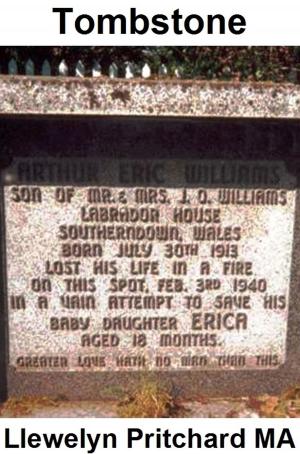Port Hope Simpson Off the Beaten Path Vol 3
Business & Finance, Economics, Sustainable Development, Nonfiction, Social & Cultural Studies, True Crime| Author: | Llewelyn Pritchard | ISBN: | 9781301209200 |
| Publisher: | Llewelyn Pritchard | Publication: | October 17, 2012 |
| Imprint: | Smashwords Edition | Language: | English |
| Author: | Llewelyn Pritchard |
| ISBN: | 9781301209200 |
| Publisher: | Llewelyn Pritchard |
| Publication: | October 17, 2012 |
| Imprint: | Smashwords Edition |
| Language: | English |
Port Hope Simpson Off the Beaten Path Vol 3
Series Title: Port Hope Simpson Mysteries
Vol 8
by
Llewelyn Pritchard
Smashwords Edition
Copyright 2010 Llewelyn Pritchard
Follow the Labrador Coastal Drive, Route 510 in Newfoundland & Labrador, Canada and discover the Town’s “Pitprops, Politics & Prosperity,” Heroic Struggle of sustainable development towards a better future 1934-2002.
After 33 years my first sight of Port Hope Simpson from the air told me how much it had grown with a new bridge, main highway and airport 15 July – 28 August 2002…
On the one hand, this journal tells the quite remarkable true story about the on-going search for justice on behalf of a young father Arthur Eric Williams aged 27 years and his infant daughter Erica d’Anitoff Williams aged 3 ½ years who died in suspicious, acrimonious circumstances in Port Hope Simpson, Labrador, Newfoundland, Canada on the 3 February 1940.
On the other hand, it chronicles Llewelyn Pritchard’s visits to Port Hope Simpson’s Come Home Celebrations and to the island of Newfoundland between 15 July - 28 August, 2002 as he also seeks to establish the facts about the cause(s) of the 2 unsolved deaths.
Port Hope Simpson History
Port Hope Simpson is situated about 12 miles inland on the banks of the Alexis River in eastern Labrador, Newfoundland, Canada. It is named after Sir John Hope Simpson, 23 July 1868 - 10 April 1961, Commissioner of Natural Resources and Acting-Commissioner of Justice, 1934-36 of the unelected, undemocratic Commission of Government that ruled Newfoundland from 1934 – 49.
Sir John Hope Simpson had given his backing to John Osborn Williams and the Labrador Development Company Ltd to set-up a logger’s camp in Alexis Bay for cutting and exporting pitwood to Cardiff for the collieries of South Wales. It is therefore quite reasonable to assume that in return, he was invited by J. O. Williams, the owner of the Company to allow his name to be given to the place where the camp was first set-up.
However, by so doing Sir John not only left himself open to accusations of favouritism in context of his official role for the Commission of Government 1934-1949 that ruled the island. Evidence also shows that he was also involved in a chain of events including lack of houses for the loggers and their families, lower than expected and unpaid loggers’ wages, suppression of an official report on loggers’ wages and a trading monopoly held by the Company store in Port Hope Simpson which meant the people were forced to live on credit and in poverty that debatably, contributed to the circumstances leading to the above two deaths.
Sir John Hope Simpson is also known for having established the Newfoundland Rangers, a welfare and police force modelled on the RCMP that was supposed to link people, especially those of the outposts in Labrador, including Port Hope Simpson with The Commission of Government in St. John’s on the island of Newfoundland. However and most suspiciously, the majority of Newfoundland Ranger Clarence Dwyer’s Monthly Reports on the General Living Conditions in his district as well as the other Labrador Reports are missing from the Archives collection in St. John’s, Newfoundland & Labrador, Canada! C. Dwyer was the most likely Port Hope Simpson Ranger on duty when the deaths occurred in 1940...
Dedication
This book is dedicated to obtaining justice for Erica D’Anitoff Williams, three and a half years and her young father Arthur Eric Williams, 27 years who died in their Labrador Development Company home, Port Hope Simpson, Newfoundland and Labrador, Canada in acrimonious, suspicious circumstances in the early hours of 3 February 1940. In 2002 the R.C.M.P (Royal Canadian Mounted Police) Serious Crimes Unit, Gander, Newfoundland opened up their own investigation about the deaths. If you know anything at all that may help get in touch.
Port Hope Simpson Off the Beaten Path Vol 3
Series Title: Port Hope Simpson Mysteries
Vol 8
by
Llewelyn Pritchard
Smashwords Edition
Copyright 2010 Llewelyn Pritchard
Follow the Labrador Coastal Drive, Route 510 in Newfoundland & Labrador, Canada and discover the Town’s “Pitprops, Politics & Prosperity,” Heroic Struggle of sustainable development towards a better future 1934-2002.
After 33 years my first sight of Port Hope Simpson from the air told me how much it had grown with a new bridge, main highway and airport 15 July – 28 August 2002…
On the one hand, this journal tells the quite remarkable true story about the on-going search for justice on behalf of a young father Arthur Eric Williams aged 27 years and his infant daughter Erica d’Anitoff Williams aged 3 ½ years who died in suspicious, acrimonious circumstances in Port Hope Simpson, Labrador, Newfoundland, Canada on the 3 February 1940.
On the other hand, it chronicles Llewelyn Pritchard’s visits to Port Hope Simpson’s Come Home Celebrations and to the island of Newfoundland between 15 July - 28 August, 2002 as he also seeks to establish the facts about the cause(s) of the 2 unsolved deaths.
Port Hope Simpson History
Port Hope Simpson is situated about 12 miles inland on the banks of the Alexis River in eastern Labrador, Newfoundland, Canada. It is named after Sir John Hope Simpson, 23 July 1868 - 10 April 1961, Commissioner of Natural Resources and Acting-Commissioner of Justice, 1934-36 of the unelected, undemocratic Commission of Government that ruled Newfoundland from 1934 – 49.
Sir John Hope Simpson had given his backing to John Osborn Williams and the Labrador Development Company Ltd to set-up a logger’s camp in Alexis Bay for cutting and exporting pitwood to Cardiff for the collieries of South Wales. It is therefore quite reasonable to assume that in return, he was invited by J. O. Williams, the owner of the Company to allow his name to be given to the place where the camp was first set-up.
However, by so doing Sir John not only left himself open to accusations of favouritism in context of his official role for the Commission of Government 1934-1949 that ruled the island. Evidence also shows that he was also involved in a chain of events including lack of houses for the loggers and their families, lower than expected and unpaid loggers’ wages, suppression of an official report on loggers’ wages and a trading monopoly held by the Company store in Port Hope Simpson which meant the people were forced to live on credit and in poverty that debatably, contributed to the circumstances leading to the above two deaths.
Sir John Hope Simpson is also known for having established the Newfoundland Rangers, a welfare and police force modelled on the RCMP that was supposed to link people, especially those of the outposts in Labrador, including Port Hope Simpson with The Commission of Government in St. John’s on the island of Newfoundland. However and most suspiciously, the majority of Newfoundland Ranger Clarence Dwyer’s Monthly Reports on the General Living Conditions in his district as well as the other Labrador Reports are missing from the Archives collection in St. John’s, Newfoundland & Labrador, Canada! C. Dwyer was the most likely Port Hope Simpson Ranger on duty when the deaths occurred in 1940...
Dedication
This book is dedicated to obtaining justice for Erica D’Anitoff Williams, three and a half years and her young father Arthur Eric Williams, 27 years who died in their Labrador Development Company home, Port Hope Simpson, Newfoundland and Labrador, Canada in acrimonious, suspicious circumstances in the early hours of 3 February 1940. In 2002 the R.C.M.P (Royal Canadian Mounted Police) Serious Crimes Unit, Gander, Newfoundland opened up their own investigation about the deaths. If you know anything at all that may help get in touch.

![Cover of the book Wild Flower Meadows and The ArcelorMittal Orbit in Pictures [Part 1] by Llewelyn Pritchard](https://www.kuoky.com/images/2013/november/300x300/9781310696213-4K7V_300x.jpg)













